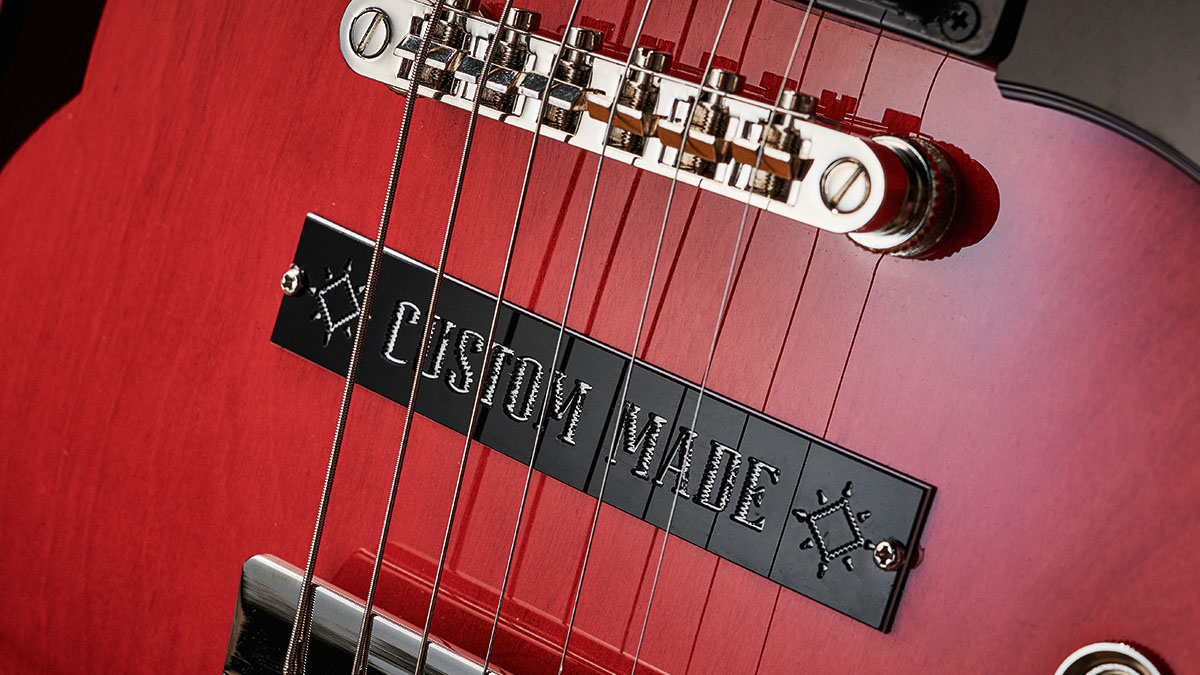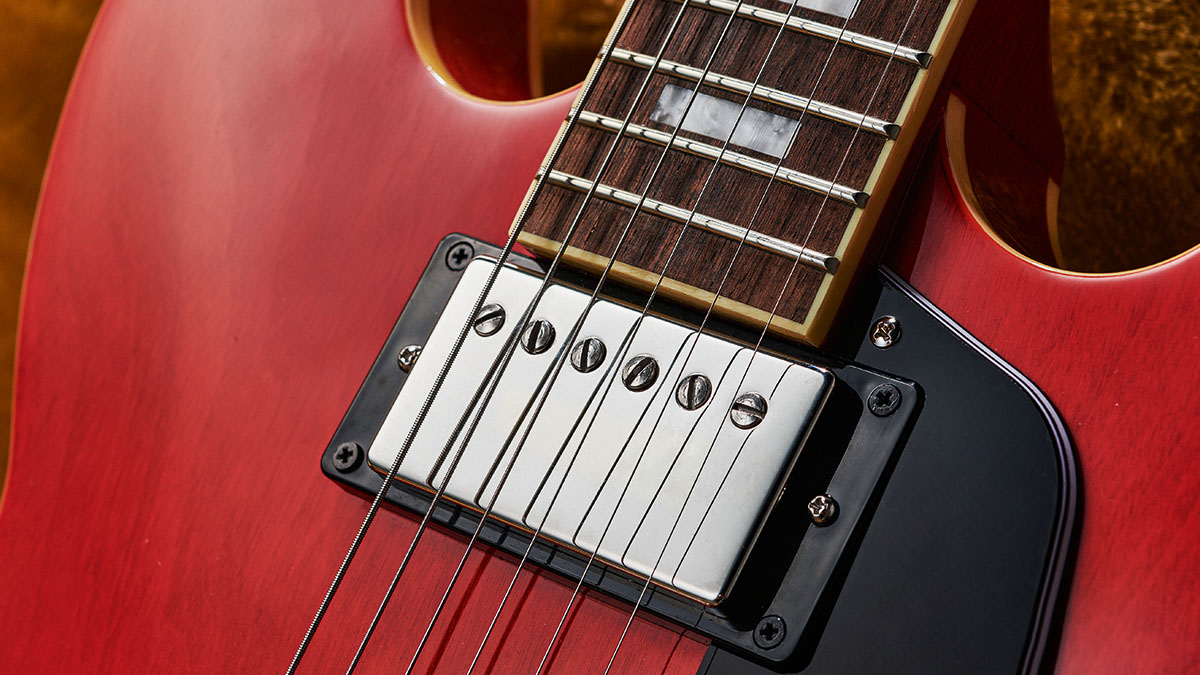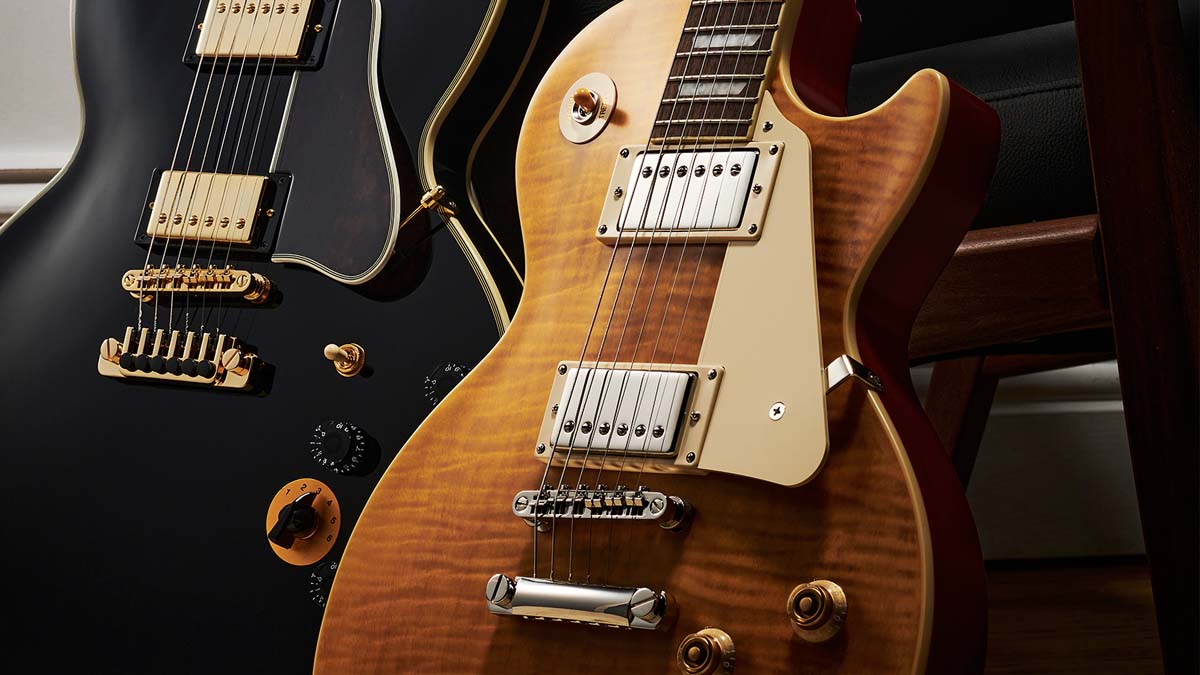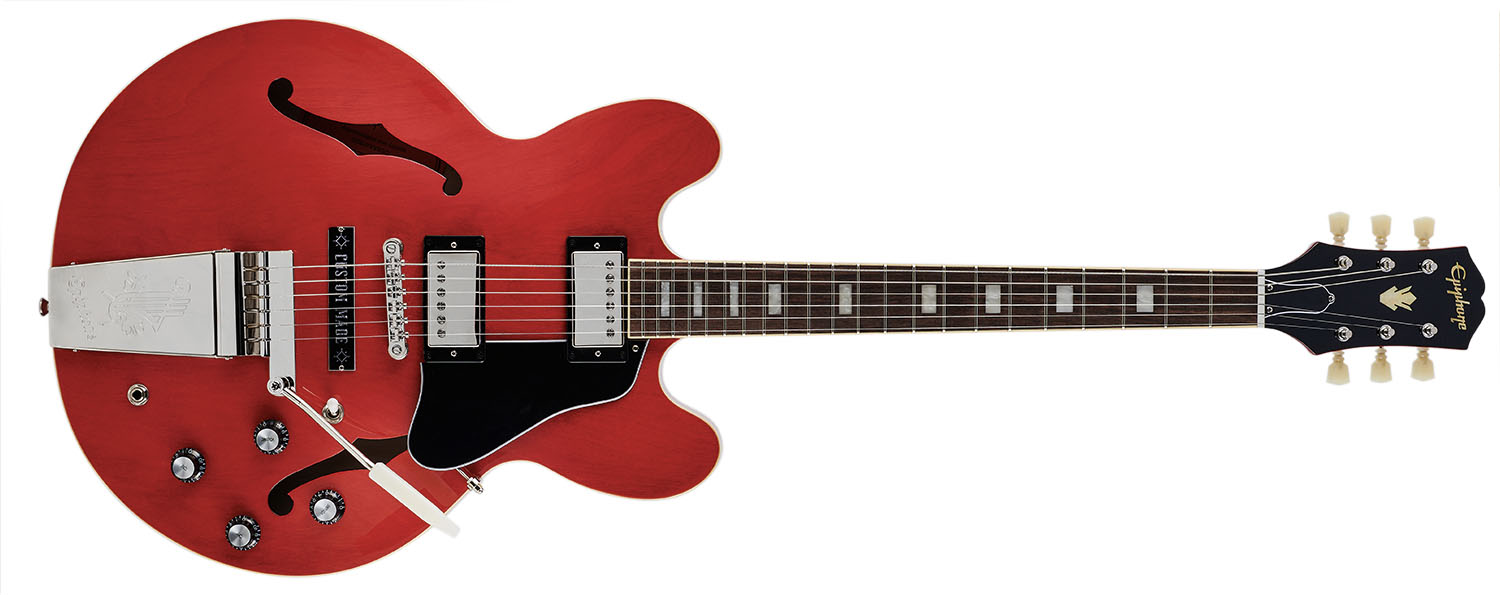MusicRadar Verdict
Bonamassa and Epiphone need to do this more often. The Gibson ‘buckers allied to a quality build and components – not to mention the great back story – make this a special instrument at the money, just like the Lazarus Les Paul. What else is kicking around Nerdville that would be worth the Epiphone treatment? The mind boggles.
Pros
- +
Gibson Burstbuckers give it some serious tones.
- +
Versatile like any guitar bearing the numbers 335 should be.
- +
Another impressive build from Epiphone.
Cons
- -
It's quite heavy.
MusicRadar's got your back
Epiphone Joe Bonamassa 1962 ES-335: What is it?
Joe Bonamassa knows a good guitar when he sees one and not all of them have to come from the halcyon days of the ‘50s and ‘60s. His long-standing partnership with Epiphone is proof positive that 21st-century electric guitars make it into his collection too.
Most recently, this partnership has born fruit with the frankly superb signature guitar inspired by ‘Lazarus’, one of the more storied 1959 Les Paul Standards in his ‘Burst collection, and here we have another stunner based on a classic from the Nerdville archives – the Jo Bonamassa 1962 ES-335 that arrives out of the custom hard-shell case resplendent in Sixties Cherry.
The ES-335 needs little introduction. It is one of the most successful – and ripped-off – guitar designs of all time, much loved for the versatile platform it offers players. Sure, play jazz, play blues, play rock… It will handle it all, and with that centre-block design, it can handle high volume without squealing in protest.

This particular ES-335 is of special significance to Joe Bonamassa. Bonamassa is now, of course, a regular performer at the Royal Albert Hall, an alumnus of Abbey Road, and the undisputed highest-grossing blues guitar player of all time. But he wasn’t always so.
This 1962 ES-335 is a guitar that dates back to when Bonamassa was just making his bones as a recording artist. Purchased in ’96, used to track his debut album, A New Day Yesterday, and thus has no small sentimental value. Not so much that Bonamassa could not be persuaded to part with it. As the story goes, he sold it in 2001 to finance his move out west.

That in itself could be a blues song – selling a much-loved guitar to do something practical and grown-up? But when you move out to Los Angeles the story arc has a way of offering up Hollywood endings, and sure enough, two decades after the release of A New Day Yesterday, Bonamassa was reunited with the guitar. It’s a beaut and that, a Chinese-made ES-335 inspired by it, is likewise, with the highlights including genuine Gibson USA pickups on it.
You’ll find a pair of Burstbuckers at the neck and bridge positions, with the two volume, two tone controls, and three-way pickup selector controlling them.
Want all the hottest music and gear news, reviews, deals, features and more, direct to your inbox? Sign up here.
Spec-wise, we’re looking at the body of five-ply laminated maple, finished nicely with single-ply cream binding, with contoured spruce bracing it inside. The maple centreblock is there offering more ballast. That binding has similarly been applied to the Indian Laurel fretboard.

Proportions are classic Gibson. The fingerboard has a 12” radius, the guitar has a 24.75” scale, and the medium jumbo frets – the tops of which could use just a very quick once over to smooth, no biggie – are familiar too. The weight is also what we have come to expect from these Epiphone semi-hollows. See Emily Wolfe’s signature Sheraton and the recently released BB King Lucille for reference. On the scales, Bonamassa’s comes in at 8.71 lbs, which is chunky but hardly a deal-breaker.
Some of that weight could be attributed to the Rounded C profile. It’s a palm-filler, very comfortable, and those who have grown accustomed to playing a SlimTaper neck will notice the difference.
Elsewhere, we have a LockTone Tune-O-Matic bridge and a Maestro Vibrola so some gentle wobble is on the cards (don't go mad; it's not a Floyd), a set of Epiphone Deluxe tuners with double ring button tuners adorns the headstock.
Epiphone Joe Bonamassa 1962 ES-335: Performance and verdict
Epiphone has been making a habit of going large on the specs of these artist signature lines and Bonamassa’s ES-335 is no different. Allied with the quality Burstbucker pickups and the Maestro Vibrola, the components used here are all from the top shelf. The pickup selector and 1/4” output jack are both Switchcraft. CTS pots and Mallory caps have been used in the wiring loom.

• Epiphone Joe Bonamassa 1959 Les Paul Standard 'Lazarus'
A worthy production line replica of a storied ’59 Les Paul Standard, Lazarus is exactly what you would expect from Epiphone and a vintage guitar connoisseur; it’s all vibe and then some.
• Epiphone Noel Gallagher Riviera
The Noel Gallagher Riviera presents an affordable but bespoke twist on a classic design, with a persuasive sound that places the field to attract all comers, and it looks damn cool, too. Which is to say that it has all the potential to become one of the artist range’s superstars.
We mentioned it up top but worth mentioning again; this comes with a hard case and it looks great, stencilled with ‘Bonamassa Nerdville, CA’ on the front, the story of the guitar within, and a picture of Joe Bonamassa as well.
A quick unplugged strum reveals an abundance of resonance and a feel that is going to be comfortable for chord work and unobtrusive when it comes time for a solo. Bonamassa likes a little fight in his guitars, his Nocaster is a favourite for its obstinance, but this ES-335 should be a crowd-pleaser on the playability front.
Plugging in and engaging the Burstbucker 3 at the bridge and you have that toothy snarl, all the width and reassuring power of a classic Gibson ‘bucker. Crank the amp, dial in a bright sound, and there’s all the trebly detail you need to make the front three rows look as though they are eating a lemon when you dig into a big bend above the 10th fret. And that bite is vital in a live situation.
The neck pickup is superbly voiced, too. As a pairing, it is no surprise to learn that blues-rock is the bread and butter. They love a bit of gain, a little raunchiness, and yet, clean up your sound and they’re as sweet as honey, convincing. This is a serious guitar. At this price, at the upper limits of the non-US Epiphone line, it should be, but it is a price that is well within the range of the serious amateur and jobbing pro.
Is it going to fool the cork sniffers down your local vintage guitar club’s cigars and brandy night? Well, not quite. But then nothing gets past that lot. What this does is sell the illusion, both in terms of feel and sound and of course looks. We don’t want to be shallow creatures but look at that finish. It’s beautifully applied and we defy anyone to take this out of the case and be disappointed.
MusicRadar verdict: Bonamassa and Epiphone need to do this more often. The Gibson ‘buckers allied to a quality build and components – not to mention the great back story – make this a special instrument at the money, just like the Lazarus Les Paul. What else is kicking around Nerdville that would be worth the Epiphone treatment? The mind boggles.
Epiphone Joe Bonamassa 1962 ES-335: The web says
"As one reference, we plugged in our Gibson Les Paul Classic with its retrofitted Burstbuckers 1 at the neck and 2 at the bridge, and the Epi holds its own. The bridge pickup here is slightly less thin and the neck nicely balanced; both really nail classic blues-rock for which, frankly, this guitar seems tailor-made. But it’s certainly not all about bluster.
"Both pickups clean up well, or suit a cleaner guitar amp where, as ever, a good ES-335 seems to cover most bases. We A/B’d it against some other instruments that cost twice and three times as much, and we still couldn’t find the catch."
Guitarist
Epiphone Joe Bonamassa 1962 ES-335: Hands-on demos
Joe Bonamassa
PMTVUK

Andertons
Epiphone Joe Bonamassa 1962 ES-335: Specifications

- ORIGIN: China
- TYPE: Double-cutaway, semi-solid electric
- BODY: 5-ply layered maple; solid maple centre block
- NECK: 1-piece mahogany, ‘rounded C’ profile, glued-in
- SCALE LENGTH: 628mm (24.75”)
- NUT/WIDTH: Graph Tech NuBone/43.3mm
- FINGERBOARD: Bound Indian laurel, pearloid small block markers, 305mm (12”) radius
- FRETS: 22, medium jumbo
- HARDWARE: Epiphone LockTone tune-o-matic bridge, Maestro Vibrola, Epiphone Deluxe tuners w/ double ring buttons nickel-plated
- STRING SPACING, BRIDGE: 51.5mm
- ELECTRICS: Gibson Burstbucker 3 (bridge) and Burstbucker 2 (neck) humbuckers, 3-way toggle pickup selector, 2x volumes, 2x tones (CTS pots/Mallory capacitors)
- WEIGHT (kg/lb): 3.96/8.71
- OPTIONS: No
- LEFT-HANDERS: No
- FINISH: Sixties Cherry, gloss
- CONTACT: Epiphone
MusicRadar is the number one website for music-makers of all kinds, be they guitarists, drummers, keyboard players, DJs or producers...
- GEAR: We help musicians find the best gear with top-ranking gear round-ups and high-quality, authoritative reviews by a wide team of highly experienced experts.
- TIPS: We also provide tuition, from bite-sized tips to advanced work-outs and guidance from recognised musicians and stars.
- STARS: We talk to musicians and stars about their creative processes, and the nuts and bolts of their gear and technique. We give fans an insight into the craft of music-making that no other music website can.



